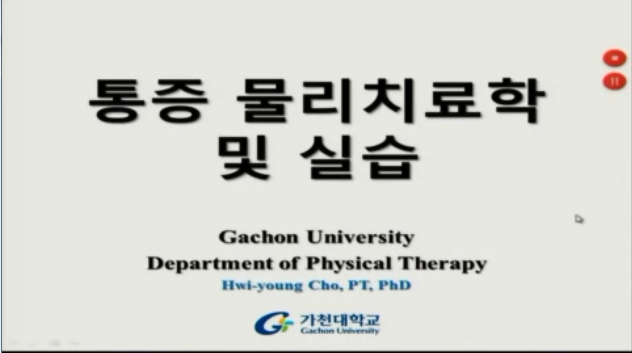Inflammation is one of the main causes of pathologic pain. Knowledge of the molecular links between inflammatory signals and pain-mediating neuronal signals is essential for understanding the mechanisms behind pain exacerbation. Some inflammatory medi...
http://chineseinput.net/에서 pinyin(병음)방식으로 중국어를 변환할 수 있습니다.
변환된 중국어를 복사하여 사용하시면 됩니다.
- 中文 을 입력하시려면 zhongwen을 입력하시고 space를누르시면됩니다.
- 北京 을 입력하시려면 beijing을 입력하시고 space를 누르시면 됩니다.
https://www.riss.kr/link?id=A105349312
- 저자
- 발행기관
- 학술지명
- 권호사항
-
발행연도
2018
-
작성언어
English
- 주제어
-
등재정보
SCIE,SCOPUS,KCI등재
-
자료형태
학술저널
-
수록면
255-267(13쪽)
- 제공처
- 소장기관
-
0
상세조회 -
0
다운로드
부가정보
다국어 초록 (Multilingual Abstract)
Inflammation is one of the main causes of pathologic pain. Knowledge of the molecular links between inflammatory signals and pain-mediating neuronal signals is essential for understanding the mechanisms behind pain exacerbation. Some inflammatory mediators directly modulate the excitability of pain-mediating neurons by contacting the receptor molecules expressed in those neurons. For decades, many discoveries have accumulated regarding intraneuronal signals from receptor activation through electrical depolarization for bradykinin, a major inflammatory mediator that is able to both excite and sensitize pain-mediating nociceptor neurons. Here, we focus on the final effectors of depolarization, the neuronal ion channels, whose functionalities are specifically affected by bradykinin stimulation. Particular G-protein coupled signaling cascades specialized for each specific depolarizer ion channels are summarized. Some of these ion channels not only serve as downstream effectors but also play critical roles in relaying specific pain modalities such as thermal or mechanical pain. Accordingly, specific pain phenotypes altered by bradykinin stimulation are also discussed. Some members of the effector ion channels are both activated and sensitized by bradykinin-induced neuronal signaling, while others only sensitized or inhibited, which are also introduced. The present overview of the effect of bradykinin on nociceptor neuronal excitability at the molecular level may contribute to better understanding of an important aspect of inflammatory pain and help future design of further research on the components involved and pain modulating strategies.
동일학술지(권/호) 다른 논문
-
- 한국응용약물학회
- ( Myungguen Chung )
- 2018
- SCIE,SCOPUS,KCI등재
-
Collagen-Induced Arthritis Analysis in Rhbdf2 Knockout Mouse
- 한국응용약물학회
- ( Min-young Lee )
- 2018
- SCIE,SCOPUS,KCI등재
-
- 한국응용약물학회
- ( Won-serk Kim )
- 2018
- SCIE,SCOPUS,KCI등재
-
- 한국응용약물학회
- ( Jun Hee Lee )
- 2018
- SCIE,SCOPUS,KCI등재








 ScienceON
ScienceON







